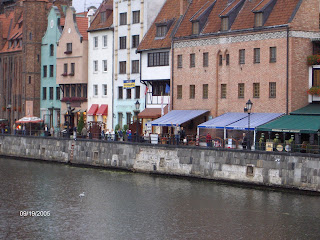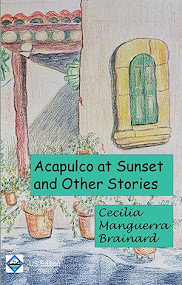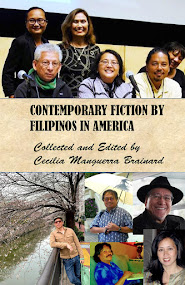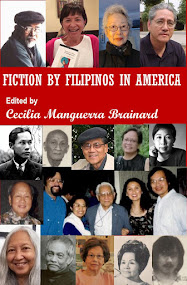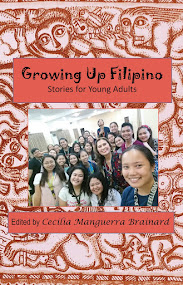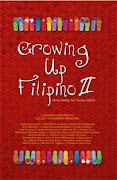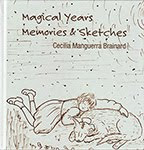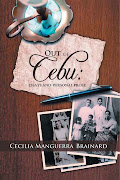Hi, I'm sharing a chapter from my novel, MAGDALENA. Recent news re Petraus-Broadwell-Kelley-Allen made me pull this out. Enjoy the story! ~ Cecilia Brainard
WINNING HEARTS AND MINDS
(1967)
(A chapter from Brainard's novel, MAGDLENA, available from Kindle and Nook)
http://www.palhbooks.com/cbrainardstory2.html
copyright 2012 by Cecilia Manguerra Brainard

During a visit to Nakhon Panom Air Base in Thailand, Colonel March Adams heard that Major Ron O’Connor had been shot down during a strike near the Plain of Jars, in Laos. When he returned to Mactan Air Force Base, which he commanded, he told his men about O’Connor, how he had been a member of the reputed 602nd Special Operations Squadron, which was primarily a search-and-rescue (SAR) outfit, responsible for all of Laos and parts of Cambodia. Known as the Sandy Mission, the 602nd also conducted strikes in Northern Laos and made sorties against the Vietcong enemy truck and troop convoys along Ho Chi Minh Trail; but they were famous for their rescue efforts. O’Connor and his wingman, Captain Jose Cass, had been on a rescue mission to save a gunned-down pilot when the enemy got their plane. The pilot whom they had tried to save in the first place, survived; but Major O’Connor “bought the farm,” as the colonel called it.
He said this matter-of-factly. This was his second war, and he had learned to look at war in terms of winnings and losses, as if it were a giant chess game with pawns and horses sacrificed for the more important chess pieces.
His men, however, were young; and they assumed a somber tone. “I knew Ron,” someone said, “he’s got a wife and two kids.”
Another spoke: “Once I went with Ron to Francois Restaurant. He had heard that Francois was the best French restaurant in Vietnam. Only problem was, Francois was in VC territory. No problem, Ron said, the VC left Francois’ clients alone. So one Friday, a group of us went, three jeeps, and guys holding machine guns all the way through VC territory to Francois. We picked a table that backed up against a wall and guys continued taking turns with the machine guns throughout the entire meal. We ate and had a lot of laughs. Oh, man, I can’t believe he’s gone.”
Thinking to console them, the colonel added, “His commanding officer recommended he be listed as MIA (missing in action) instead of KIA-NBR (killed in action, no body recovered) so his widow will continue collecting 20 grand a year. If he’s KIA-NBR, she’ll get a lump-sum settlement and less than half the continued compensation.”
The airmen proceeded to talk about their preferred listing if something did happen to them in Southeast Asia. Some men agreed that KIA-NBR was a better deal for their families; others thought the psychological anguish would be torture on them. The overall tone of the conversation turned so grim that all of them jumped at the suggestion to go to St. Moritz Bar.
~~~
The owner of the bar was an expatriate German named Karl, a loud, effusive man, whose life centered on his bar. “We have some new girls,” Karl said with a thick German accent. He gestured toward the stage in the center of the bar where half a dozen Go-Go girls were dancing. “Some clubs have goldfish, I have beautiful girls.” He sat beside the Colonel and ordered a bottle of Scotch for the Americans. “Look at that. Just look at that, their bikinis are no larger than postage stamps,” he said with a wink.
The airmen laughed and hooted. The colonel relaxed, glad that the fiery memory of O’Connor was receding from his men’s minds.
“They come to me, begging for work,” Karl continued. “I take good care of them. Why some of them have married my clients! Last month, a dancer stopped by with her New Yorker husband -- and a three-carat diamond ring. Not too bad for someone from a barrio. I am the one who picks them, each and everyone of them. I go to small barrios; I pick the prettiest. Sometimes I pick some ugly ones, like that one over there who looks like King Kong. Believe it or not, some men like ugly girls. But this girl with the ring, she was beautiful. And obedient. What else can a man want? Her husband must be very happy.” He slapped his thigh and guffawed.
The colonel glanced at the smiling dancers who were furiously gyrating; and for some reason, he remembered his wife, two children, and their Golden Retriever back in Charlston, South Carolina. It had been five months since he met his wife in Honolulu for a brief R&R; and he wondered how she was.
“So, Colonel, how is your war coming along? News is always about Vietnam. Last week there was a picture in Time of a village burning. And inside, a story about more American bombings. The North, the South, they don’t get along. It is a mess, ja? Well, here in St. Moritz, everybody get along. Have more whiskey, Colonel.”
Before the colonel could answer, the German left. The colonel was relieved. The German’s accent grated on his nerves.
The whiskey loosened the knots in his shoulders. He closed his eyes and pictured the airy houses in Charleston. He imagined himself walking along the city walls, looking across the sea at Fort Sumter. He recalled his grade school teacher, Miss Hill, a passionate Southerner, proudly relate the story of how Charlestonians had bombarded the fort, thus starting the Civil War. As a little boy, he used to recreate famous battles like the Battle of Gettysburg, using small toy metal soldiers. He wondered what happened to the toy soldiers. The last time he had seen them, they were in a box in his mother’s attic.
A girl spoke, startling him. “Maybe you find it one day.”
He raised an eyebrow at the girl who had sat beside him.
“What you are looking for,” she continued. “A while ago, you said, ‘I need to find them.’”
Embarrassed that he had voiced his foolish thoughts, he said, “It was nothing.”
“Do you want more Scotch? Sir says to take care of you.” She pointed at the German who was now at the other end of the room.
“I’m sorry. I have to leave.”
“If you go, he’ll think I’m no good. He’s watching me because I’m new here. I’m a singer. I started work last Wednesday. Were you here last week?” she asked.
The colonel shook his head. “No, I was in Pleiku.”
“What’s ‘Pleiku’? A beach or something?”
“No, not a beach.”
“Here in Philippines? Or someplace else?”
“In Vietnam,” he said, irritated at her persistence.
“Ah, yes, Vietnam. Is there fighting in Pleiku?”
“It’s a place in Vietnam, that’s all.” He didn’t add that as he was driving toward Pleiku, he had seen graves on either side of the highway. Markers, as far as the eyes could see, 150,000 of them, an endless stretch of worn, gray-white markers. An ocean of grave markers. Thousands of these were graves of French soldiers who had died at Dien Bien Phu. For the rest of his life, he would never forget the sight of those markers.
“You have to be happy like others. Sir likes everyone happy. Want to dance?” She gestured toward the pulsating dance floor.
The colonel shook his head.
She hesitated, but said: “Maybe you want a good time? Bar-fee is twenty dollars, but the boss says to go with you, no problem. He wants you to have a good time. He likes Americans here. Lots of dollars. I can give you a good time. Two hours, three hours, even four, forget the sad times; be happy. But not all night. I go home before morning.”
She was wearing tight black pants and a sparkly red top. Although her lips were bright red, her face looked young, like a fourteen-year old playing grownup. Her hand was resting hear his, and her skin looked soft. For a moment, the colonel imagined the feel of human skin against his, and how comforting that would be; and he was tempted. No one would care; and his wife wouldn’t know. He could take her to the hotel down the street; they could be together for a couple of hours. He would feel her body, taste her lips, find release; he would forget O’Connor, Pleiku, the war. One hundred twenty-minutes, that was all; and there the matter would end.
But quickly lust gave way to anger at his weakness; and later, anger at the corruptness in Asia, how women like their politicians sold themselves, just like that. Here there was a price for everything. And here, in this far-off, God-forsaken place, men like O’Connor were dying. What for? What were they sacrificing their lives for? If he died, would he have died for his country, or for Asia? And what in hell were they doing in Asia in the first place, a place he didn’t even like, peopled by people he couldn’t even understand; peopled by people who didn’t even like Americans? What was it all about? Americans would bleed to death as the French had in Dien Bien Phu until it fell in 1954. That was the fate of Americans in Vietnam. This war was a waste of time, a waste of money, a waste of American lives.
He got up, ramrod, and headed for the door.
Unfazed, the girl shouted after him, “I’ll tell Sir you have a wife back home.”
~~~
Saturday, the colonel did a double-take when Captain Nathan Spencer reminded him what his afternoon schedule was.
“A child care what?” the colonel shouted.
“Its inauguration, Sir. A child care center, in Ubec. You’d okayed giving them old medical and dental equipment, Colonel, and the women had invited you to give a talk. You said yes.”
“I don’t care about the equipment; they’ve had it. But what is this about a talk? I’m here to fight a war, not to give goddamn lectures.”
“You accepted their invitation, Colonel, Sir. You agreed it may be a good way to win the hearts and minds of the people. I understand the center is for children of prostitutes, Colonel, and apparently a lot of the kids are half-Americans. The women organizing the event wanted to make sure you’re aware the archbishop and mayor will be speaking along with you, Colonel.”
“The church and state will be there, so by gum, the US government must be represented.”
“Something like that, Colonel.”
“Well, then, you come along, Captain.”
Before serving in Asia, Colonel Adams had been part of the mission at the North American Air Defense Command in Colorado and he had taught part-time at the Air Force Academy in Colorado Springs where he had met Captain Nathan Spencer and struck a friendship with him. He liked the young man and gave him what he considered fatherly advice.
On the way to the city, the captain said, “I can’t help wondering, Colonel, about the poverty here. I understand there are a lot of resources, gold, silver, copper; the land is rich. I’ve flown over acres and acres of green rice paddies; clearly the land is fertile. Yet I’ve heard babies die from disease and hunger. It’s fascinating, Colonel, the contrast between the beauty and poverty here. I can’t figure it out.”
“Corruption, Spencer. There’s corruption on every level of society. You can’t get anything done without paying someone. We’re doing our best for them, trying to establish a democracy in these countries, but sometimes I wonder if it’s worth it.”
“And there’s the question of democracy, Colonel. I’ve read the Vietnamese government is repressive. And we’re supporting them, Sir. I should be simply doing my job, I know that Colonel; but I saw that picture in Time, a Vietnamese village, Sir, in flames, with a child bleeding, and other people around. And Colonel, well, when we’re up in the air, we don’t see the faces of these people. The navigator locates the target; the bombardier pushes the button; and we return to the base. I guess what I’m saying Colonel, was that it felt strange to see that picture, to realize we were responsible for all that.”
“Let me give you sound advice, Captain. Don’t do drugs; avoid the women; do your job in the best way you can, and you’ll get out of here alive.” It had sounded so simple; surely Ron O’Connor had followed that advice, but Ron was dead. The colonel wondered what else was needed to survive this war.
~~~
Erlinda Sabados and Josie Martinez, president and vice-president respectively of the Catholic Women of the Virgin Mary Most Pure, greeted the men. "Colonel Adams, Captain Spencer," Erlinda began in a sing-song voice, "how nice of you to join us. We are happy, so very happy that you are here with us." She was a large woman, a spinster, in her mid-fifties.
"So happy, Colonel," said Josie who was a younger, smaller version of Erlinda (Erlinda's shadow, Ubecans called her).
"You have fifteen minutes, Colonel. You come after Archbishop Montalban and the mayor. You're with two very important figures in Ubec, so you see Colonel, how much we consider American support an honor." Erlinda stood on tiptoe and draped a sampaguita lei over Colonel Adam's neck and another over Captain Spencer's neck.
"An honor," Josie echoed.
"Some GROs will be present Colonel. The women. The mothers of the unfortunate children. Out of delicadeza, we call them GROs,” Erlinda whispered.
"Guest Relation Officers," explained Josie.
"Even before Kaugma-an was finished, twenty children signed up, Colonel. Somehow, the GROs heard about the center and begged that we take their children in. Because they are out all night, they sleep in the daytime, leaving the children totally unattended. No Catholic training whatsoever, none. Those poor children grow up like heathens. A place like this is a haven to them. The GROs have been particularly busy, Colonel, as you know. Since you Americans expanded your base, there are quite a lot of soldiers around our city.
“I’ll be frank, Colonel, when I first introduced the idea of a child care center, there was great resistance from members. They accused me of avoiding the real issue, prostitution. They insisted prostitution is immoral, corrupt, not to mention unhealthy; and that prostitution needs to be stopped once and for all. I agreed with them; but the question was how to stop prostitution. How do you stop the oldest profession? Do you have the answer, Colonel? I didn’t. We thought that since GROs were in the business for money, we could start a training center to teach them some other trade - sewing perhaps, or cooking, or some other small cottage industry. The idea was shot down by a GRO herself who said it would take a week of stitching rag-dolls to earn what she made in one night as a prostitute. And of course your Base, these Americans on R&R with their dollars to spend - well, it was an issue of economics, pure and simple, and eventually the others supported my proposed child care center project, hoping to save these children since we can do nothing more for the mothers.”
This was a matter that the colonel had never even remotely considered, and he became curious. He asked if the center’s name, Kaugma-an, meant anything; and he nodded approvingly when Erlinda said it meant tomorrow. He observed the three rooms that served as classrooms, the kitchen, the nursery, and the clinic with the American equipment. He was glad that he had had the wisdom to give them the old equipment.
The women led them to some chairs near the podium in one of the larger classrooms, and they left to test the mike and gather everyone for the program.
The mayor and archbishop, who were already seated, were discussing the Catholic Women.
“These women are the backbone of Ubec society,” the archbishop expounded. “Good and pure. They do not let their wealth get in their way. They see everything in clear perspective. They fixed up the old Spanish fort; now they are taking care of these unfortunate children. They use their own money; they beg, they borrow, they virtually steal, to get these worthy projects done. But they get them done. God bless them.”
The mayor spoke: “Monsignor, let’s not forget the city donated the building. It’s old, that’s true, but it’s rent-free. And of course Monsignor, our good American friends here have donated medical and dental equipment. You cannot imagine, Colonel, how very much appreciated these things are. The doctors, all volunteers by the way, had nothing more than stethoscopes - I exaggerate - but seriously, they had little else. But now, they have these fancy American equipment, why these are better than the equipment at Ubec General Hospital.”
The colonel felt embarrassed; he had simply been junking the equipment. Helping these children, these people, had been the last thing in his mind.
Erlinda and Josie returned with soft drinks and plates of food, which they set in a low table in front of the men, and then Erlinda started the program.
She spoke for a long time, and the solitary electric fan could not dispel the heat that sprang from the cement floor. The colonel took his handkerchief from his pocket and mopped his brow. He glanced at his watch, and noted that it was already mid-afternoon. Tomorrow, he had to fly to Vietnam for a meeting with General Westmoreland.
The program plodded along.
Erlinda introduced another member of the Catholic Women, who in turn introduced a priest, who in turn introduced Archbishop Montalban. The archbishop congratulated the Catholic Women on the completion of the child care center; he praised their vision in responding to "what was happening in Ubec in the face of the expansion of the nearby military facility." He touched, very delicately, on the unfortunate reality that GROs could not afford to acquire respectable jobs; and he talked at great length about the children of these women, the innocent children, who fortunately would be in a proper Catholic environment within this child care center.
Erlinda returned to introduce the mayor who kicked off his talk by reading an excerpt from "The Hound of Heaven." Nobody got the connection between the poem and the center, but the mayor was an eloquent orator, and he segued nicely into a detailed account of how the Catholic Women had asked him for the city's support, how delighted he had been that he could provide assistance, and he assured everyone he would continue to help them as long as he remained in office.
It was the colonel’s turn. Erlinda introduced him. Colonel Adams had planned on speaking for no more than five minutes. He surprised himself when words flowed. He sidestepped the issue of prostitution and the question of the children’s paternity and started to talk about how pleased the American people were to provide assistance to Filipinos and other Asians. He found himself elaborating on how Americans wanted nothing better than to win the hearts and minds of the people. When he sat down, he thought he had sounded more like a USAID officer than an Air Force Colonel.
There were more speeches from various officers of the Catholic Women, from the doctors who volunteered at the clinic, from the woman who made lunch and snacks, from the restaurateur who donated food, and then, to the colonel’s great surprise, a familiar-looking woman took the mike. It was the singer at St. Moritz Bar. The memory flustered him. He hoped she would not recognize him.
Her eyes paused ever slightly at the Colonel, but her face showed no sign of recognition. “Good afternoon, ladies and gentlemen. I am a singer,” she began, “I sing at night, at St. Moritz. Some people say it is a bad place, but they pay and I am able to buy food and clothes for my child. I have a little boy. At night he is with my mother, but in the daytime, he comes here. He can now make the sign of the Cross; and he can say ‘Jesus.’ One day he will have a better life than me; and it will be because of you. Kaugma-an -- Tomorrow -- he will do better than me. Thank you. Now I will sing.”
She sang a plaintive rendition of "We Shall Overcome" followed by a rowdier "Boots Were Made for Walking." A ripple of tension swept through the audience when the singer marched provocatively around the room, but vanished when the archbishop himself cocked his head to one side, and started snapping his fingers in time to the music.
Later, the singer brought the children to the middle of the room. The older children giggled and pushed one another. The younger children clung to the woman’s legs. The colonel wondered which one was her son. When they were in position, the woman whispered something to the children that made them smile and relax. Eyes riveted on them, she lifted a finger and led the children to sing a playful Ubecan song about a local fisherman, Filemon, catching a tambasakan fish. After, they sang a couple of medleys that involved audience participation.
There was a final dance number by the younger members of the Catholic Women who did a bamboo dance. Clad in colorful native costume, they hopped and glided over bamboo poles that were rhythmically banged together; and finally the program ended.
Colonel Adams and Captain Spencer got up and said goodbye to the mayor and the archbishop, who suddenly exclaimed to people’s bewilderment, “Yes, Sinatra! The daughter sang the song!”
Erlinda and Josie escorted them to the main door. There, waiting by the side was the singer, with a little boy in her arms.
“Sir,” she called, addressing the colonel, to the surprise of everyone. They paused. “This is my boy,” she continued.
The colonel looked at the child.
“I come home to him every night, after work. Every night,” the singer said.
“He’s a nice-looking boy.”
“Do you think so? Sometimes he is naughty.”
“A strong will, that is all. He has strong jaws. A strong will is good.”
“I want him to do better than me.”
“I believe he will. He’ll do all right.”
The singer beamed. “Thank you, Sir. Goodbye.”
The colonel nodded and he and the captain continued to the doorway. They said goodbye to Erlinda and Josie who appeared puzzled at the exchange.
When they were in their car, the captain said, “That was a good speech, Colonel.”
“I overdid it, Captain. I’m a soldier, not anything else.”
“Oh, no, Colonel, I believe your speech won their hearts and minds.”
The colonel looked out the window and saw shanties along the road and piles of garbage. Young children, no older than the bigger children at the child care center, were rummaging through the garbage. Sticks in their hands, they poked through incredible filth to find empty bottles and newspapers, little treasures which they could later sell. He must have seen them before; but this was the first time the colonel noticed these children. How peculiar Asia was, he thought, with all its different facets.
He paused and said, “And I’m afraid, Captain, they have won ours.”
~end~
Copyright 2012 by Cecilia M. Brainard; all rights reserved.
Read also:
Flip Gothic
Manila Without Verna
Winning Hearts and Minds
The Black Man in the Forest
The Old Mansion near the Plaza
The Blue-Green Chiffon Dress
~~~
tags: Philippines, literature, novel, fiction, Vietnam War, Cecilia Manguerra Brainard

 A few days ago, Mexican Mayor Dr. Maria Santos Gorrostieta became still another victim of the Mexican drug cartel. She had survived two assassination attempts, but the third attack left her beaten, burned, tortured and dumped by a roadside. She had been driving her child to school at 8:30 in the morning when she was ambushed in the city of Morelia. In front of witnesses, she was physically assaulted; she had begged for her child to be spared; they took her away, leaving the child wailing. This happened on November 12, 2012.
A few days ago, Mexican Mayor Dr. Maria Santos Gorrostieta became still another victim of the Mexican drug cartel. She had survived two assassination attempts, but the third attack left her beaten, burned, tortured and dumped by a roadside. She had been driving her child to school at 8:30 in the morning when she was ambushed in the city of Morelia. In front of witnesses, she was physically assaulted; she had begged for her child to be spared; they took her away, leaving the child wailing. This happened on November 12, 2012. There are many other instances of violence against women who have stood up to what they believe is right, including the young Pakistani girl, Malala Yousafrai, who was shot in the head and neck by the Taliban, simply because Malala spoke up for women's education. She survived and is recovering in London with her parents.
There are many other instances of violence against women who have stood up to what they believe is right, including the young Pakistani girl, Malala Yousafrai, who was shot in the head and neck by the Taliban, simply because Malala spoke up for women's education. She survived and is recovering in London with her parents.














